xDuoo XD-05 Portable DAC
Introduction
Music should not be a thing one can only be enjoyed at home, music must be enjoyed everywhere - at home, outdoors, or at work. Especially work!
Music brings a lot of joy, and everybody loves a happy workplace. With my new job, I no longer have a fixed office/desk. In the morning on every work day, I take all my work equipment from a central area and take it to an unoccupied desk in the "office pen", where I will work from for the the rest of the day. In the morning I'd unload my equipment, set it up, work and then pack everything up when the day finishes. Everything has to be packed up, no personal belongings can be left on the desk at the end of the work day.
This system is called hot-desking. I love the flexibility this system brings, and my employer can reduce its operating costs (Don't have to maintain 1:1 staff/equipment ratio).
Win-Win! Except a hot desking environment is not ideal for an audiophile.
This environment is suited for a normal audio system because it'd be too time consuming to setup and dismantle every day. Headfi is the way to go. Previously I'm using a Teac UD-501 DAC. While that unit is already a compact DAC/AMP, the size is still impractical for a hot-desking environment. I need something smaller and lighter, something ideally suited for a hot desk office. Something that don't require a audit every year. The Teac UD-501 is totally unsuitable in this environment and has to go. The fact that it's a terrible sounding DAC really makes this a no brainer.
So off I go looking for the 501 replacement - the newcomer must satisfy the following:
- Budget of $AUD250 or lower
- DSD support
- Headphone Amp
- Stereo Input
- Digital Input
- USB input
- Works with mobiles as music source
Did not have a lot of time to do my research, so I randomly searched e-bay and basically purchased the only product that meet all the above requirements: xDuoo XD-05 DAC. All at a princely sum of AUD$212.41 (with 10% e-bay voucher applied).
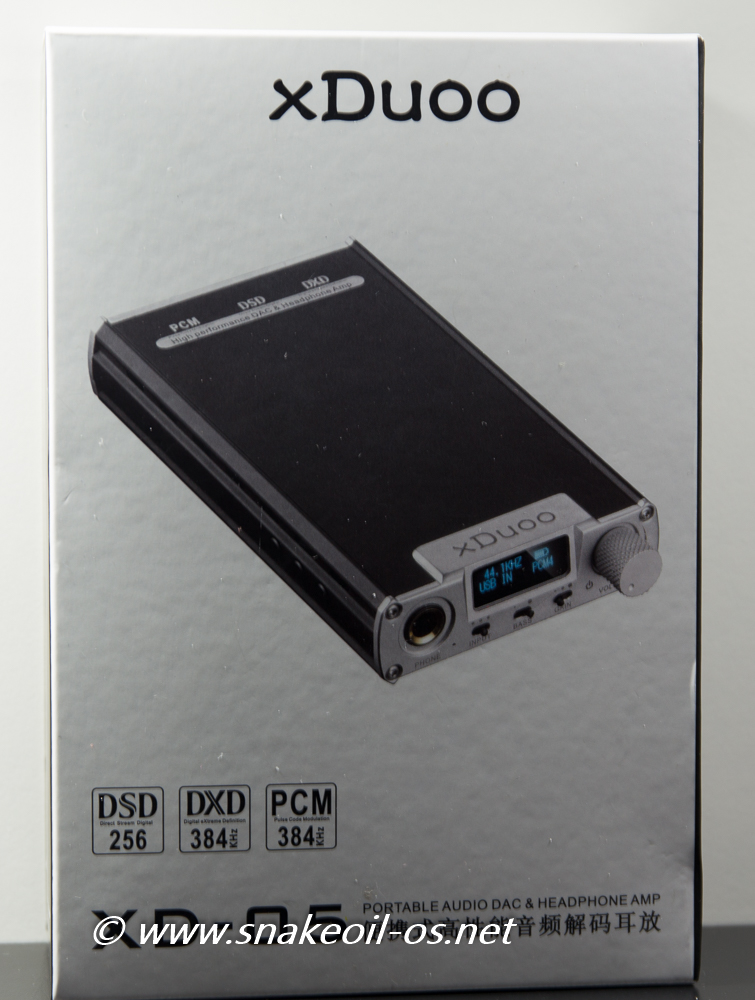
So what's in it? Let's take a look and see what a $212 product brings.
Back Of Packaging
The back of the packing has a lot of text - characteristics (mash of specifications and functionalities) and a package list. Fair bit of text
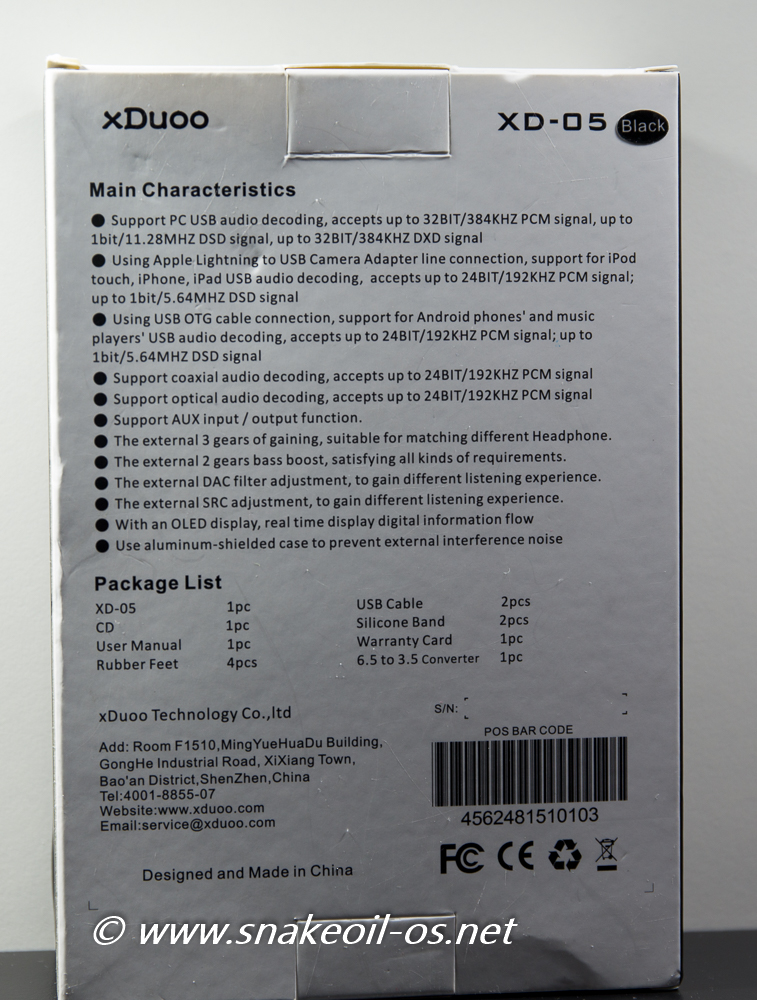
To be honest I did not expect to find a device with all these features at this price point. Something this feature rich can only come from China. What a manufacturing power house!
Nothing much to side on the sides of the box, a QCode which I assume will go to the XD-05 product page (I did not bother to verify it).
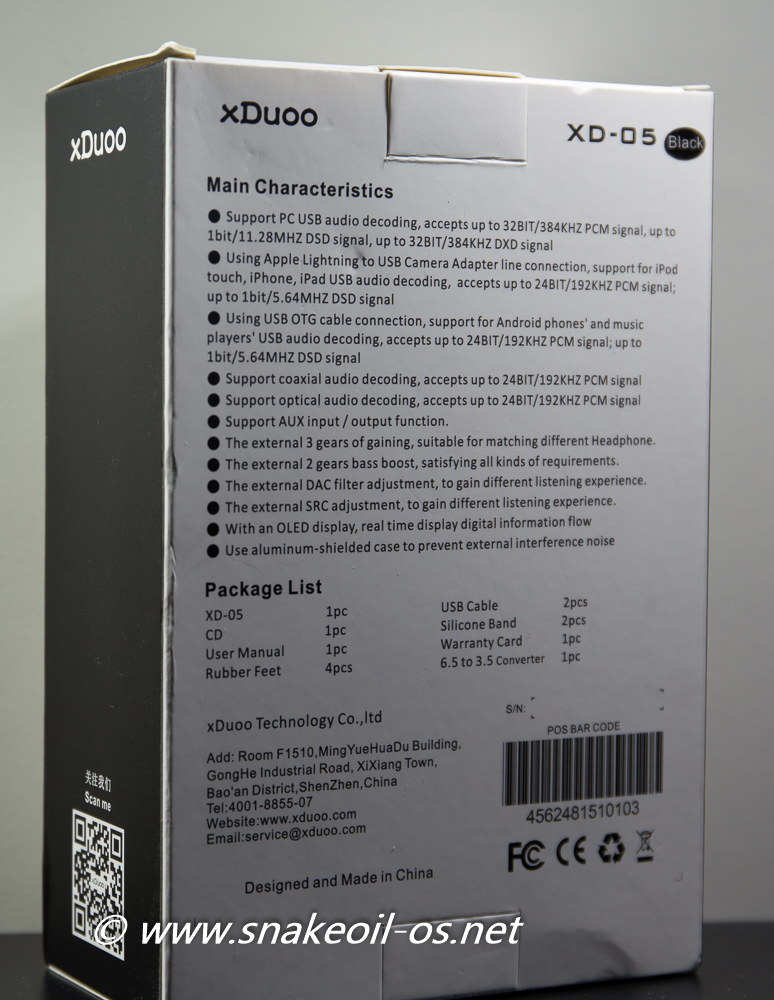
Internal Packaging
The product is double boxed. Here is the picture of the inner box, with the gold xDuoo accent. Simple, elegant and not a lot of fanfare.
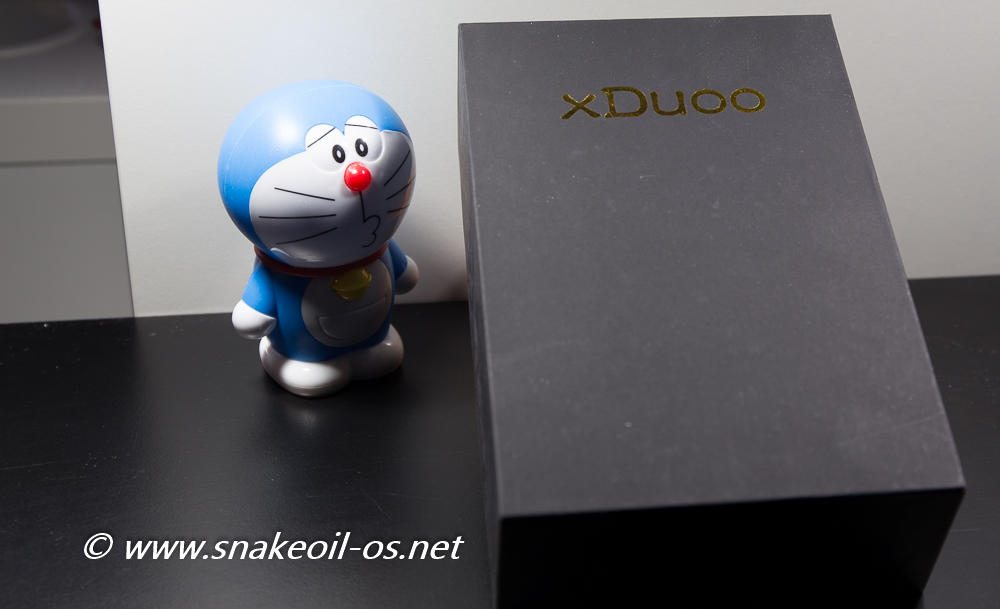
This box reminds me of a typical mobile phone packaging for some reason. The figurine to the left is Doraemon. He is not too happy I'm spending money again!
Unwrapping
Removing the top cover and finally we see the DAC. For some reason I expected the DAC to be wrapped in some form protective foam bag (probably because the inner-box reminded me so much of mobile phone packaging. But honestly, the DAC unit is already well protected and there is no need for anything else.
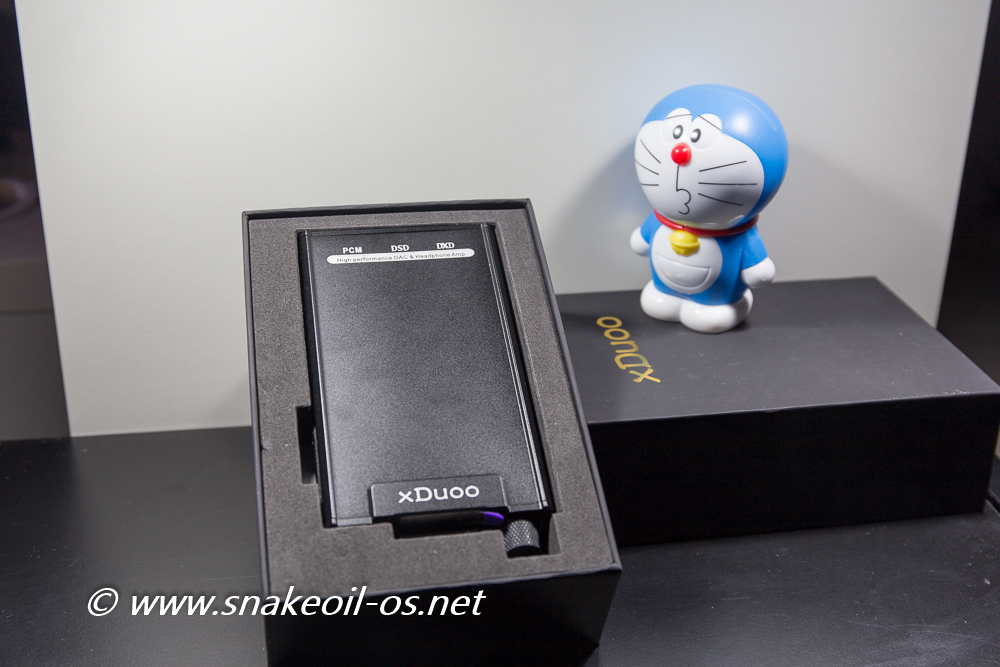
From this perspective the fit and finish of the DAC is excellent. Greasy fingers is likely to leave a mark on the surface though - I did a quick test and already you can see some streaks. Not that big a deal, they can be wiped off easily.
Accessories
There is a second box underneath the DAC, where all the accessories are kept. We already know what to expect from reading the packaging, but here they are:
- USB Male/Female cable
- xDuoo mini CD (Driver CD)
- Warranty Card
- 2 silicone bands (blue and black)
- 3.5 to 6.5 mm adaptor
- rubber feet (8 pieces)
- Micro USB cable
- Instruction manual
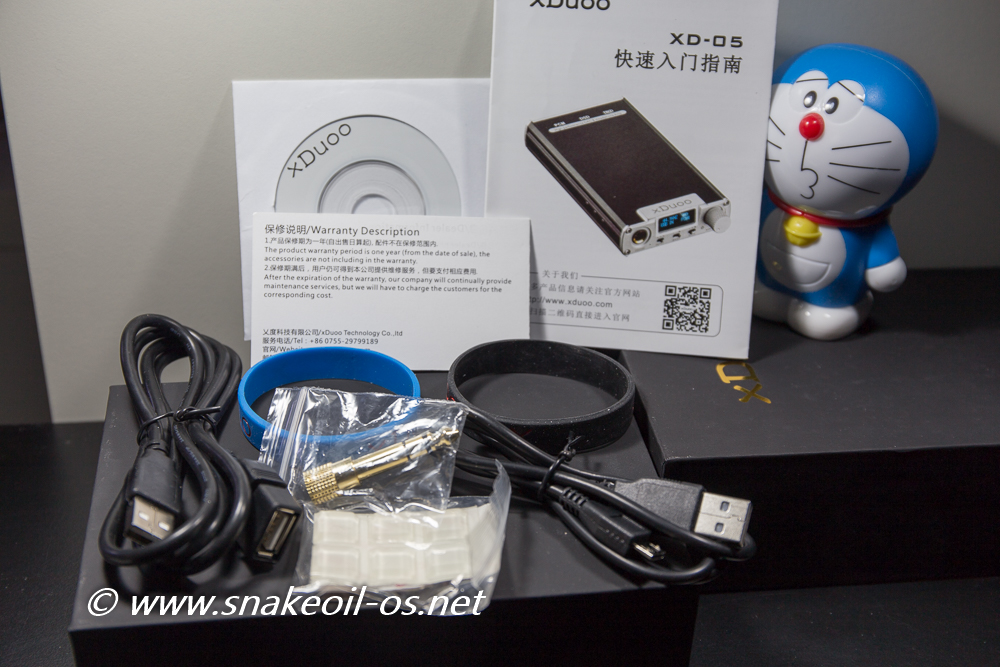
This DAC is unique for me as it is using USB OTG to connect to mobile devices and computers. The micro USB on this is only used for charging and cannot be used as a data port as far as I can tell. This is painful because
- It is another cable to bring along
- The USB OTG do not charge battery. This means there are two cables if you want to use and charge the DAC at the same time. Not a deal breaker but it has its inconveniences.
Physical Unit (Part I - Front)
The unit approximate physical attributes are:
- Length: 12.8 cm, or 13.9 cm with volume knob
- Width: 7.5 cm
- Height: 2.4 cm
- Weight: 247.35 g
This DAC is compactly sized. The weight is perfectly suited for my work place.
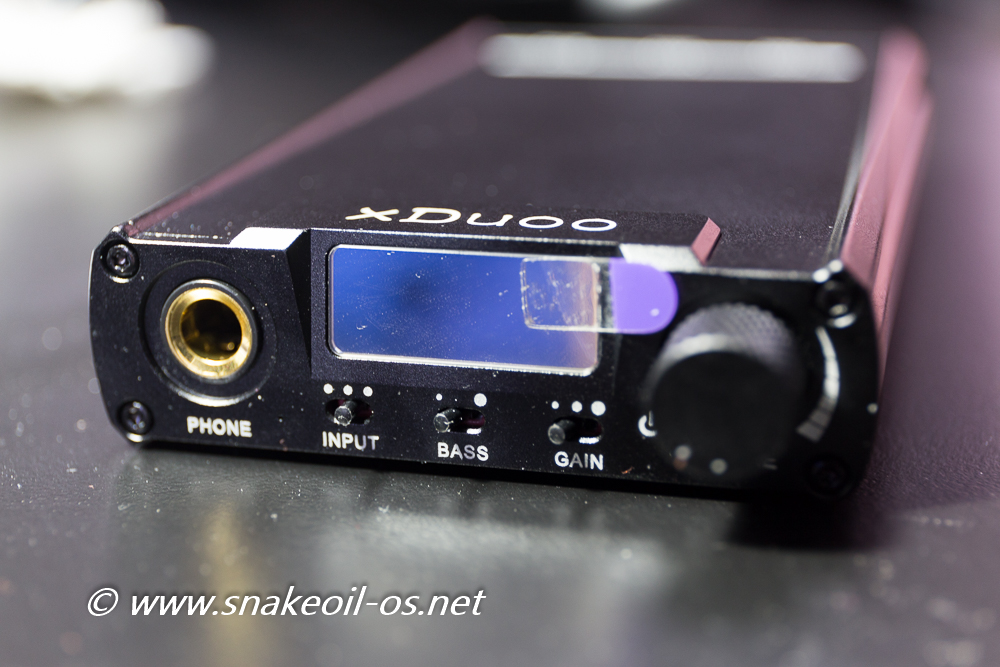
On the front is a 6.5 MM headphone jack, a tiny OLED status display, a volume knob and finally 3 tiny switches at the bottom:
- Input: From left to right - optical, USB and AuxIn (You can hear what appears to be a a relay clicking noise when switching the input)
- Bass: Normal, Enhanced
- Gain: 0 dB, +3 dB, + 11dB
For me I left the Bass as normal (left), with 0 dB gain (left).
The volume knob doubles as a on/off switch. Turn the knob all the way anti-clockwise switches the unit off. Turn the knob clockwise to turn the unit on, and more to adjust volume. Boot up time of this DAC is around 4 seconds.
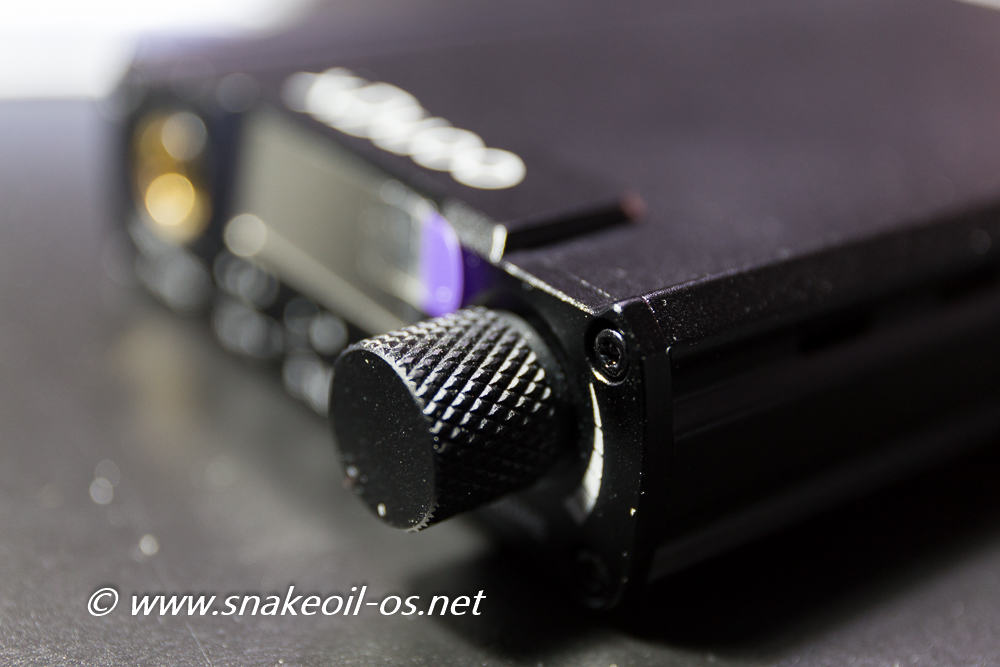
Personally I like feel and touch of this volume knob. It gives me decent feedback, and no frustrations at all when trying to get to the SPL I wanted. The physical size of the volume knob is smaller, but I did not find that to be an issue at all - it's a portable DAC after all.
Just this knob alone makes me love this XD-05 over the Teac. The volume control on the Teac UD-501 is so painful to use!
Physical Unit (Part II - Side)
There are three buttons on the left side of the unit. The printed labels are on the bottom of the DAC (so the top is nice and clean). Not a great choice font wise as the letters I and L in the word filter make it look like a typo.
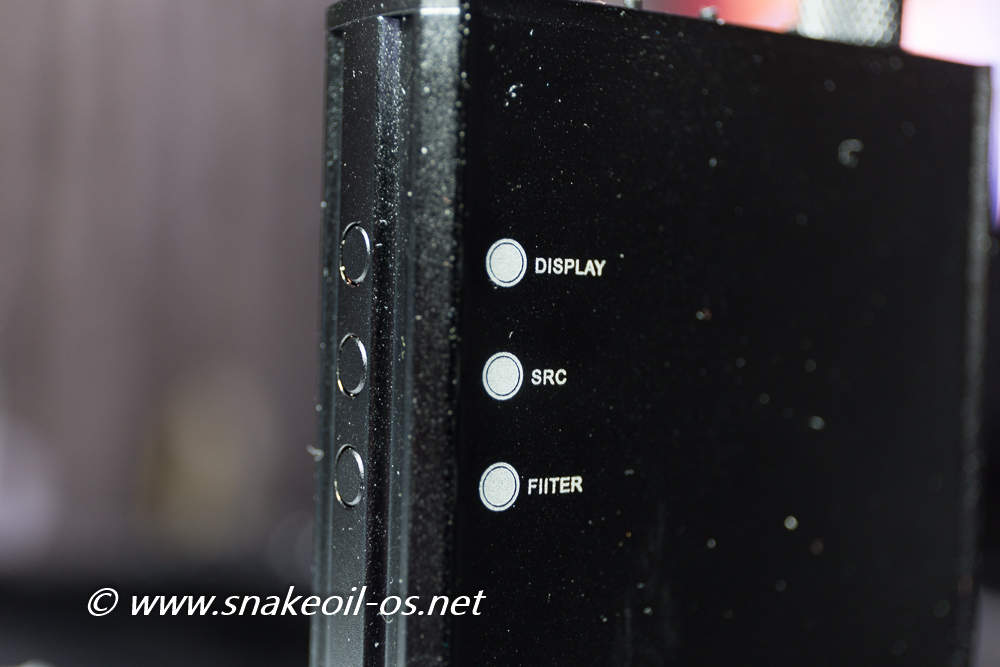
The Display button turns the small OLED status on or off. When the status is off, a tiny recessed notification LED (blue) near the headphone output will lit up (letting you know the DAC is still in operation).
Not entirely sure what the SRC does as toggling that don't appear to change anything on the status display, and as far as I can tell, no audible change.
Filter is the low pass filter (LPF) to apply. Different filters are used for PCM and DSD. So far in my short listening session I prefer PCM4 and DSD2. This of course is my subjective preference so YMMV.
Really don't like the positions of these buttons. Every time I moved the DAC on my desk, inevitably I will push on one of the buttons. Happened to me so many times it's getting annoying and I wished xDuoo used buttons that'd only actuate with more force.
Physical Unit (Part III - Back)
Lots of things happening at the back:
- AUX In/Out: Tried this jack in Aux in mode, and it works. Did not really listen to this critically, but already it's heaps better than my laptop's line in. Having an analog input will be in handy in the few rare situations when I need one for work. Don't leave this plugged in unless you're using Aux In though - you can hear noise on the USB input if AuxIn is connected. The headphone out volume also dips. Makes one wonder - is the relay click I hear doing anything at all?
- DEVICE: This is the USB input. This is a weird input to use as it means I cannot use "after-market" USB cables. One can only assume this is the best receptacle to use with mobile devices
- LINK: A recessed red LED that lits up when using the DEVICE link.
- CHARGE: Micro-USB jack for charging the DAC. There is another recessed LED (red) that will light up when charging. And if the DAC is on, the OLED display has a battery indicator showing the charge.
- DIGITAL IN: Yet to try this. But again will be handle when needed.
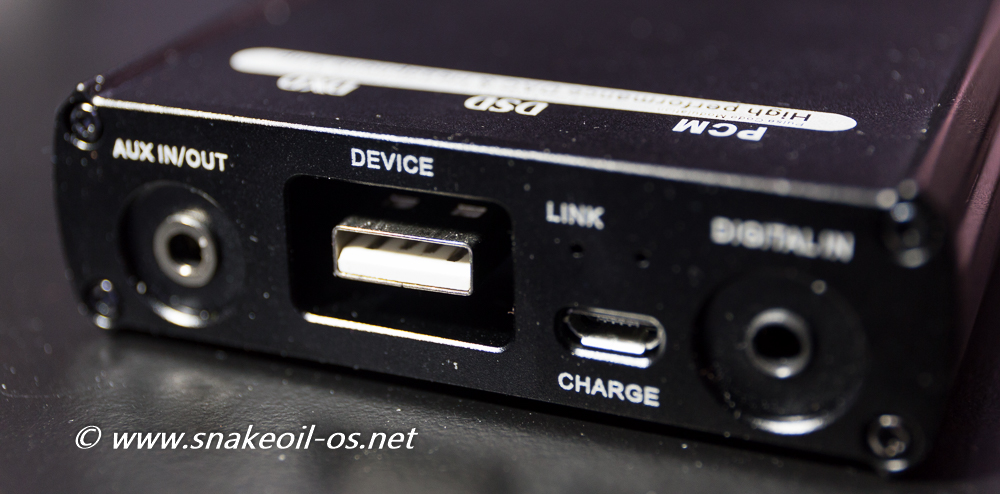
As you can see, a variety of options for a little over $200. It has all the inputs I need for my work, and it plays music.
First Impressions
Here is a close up of the aluminium casing of the XD-05. The finish appears to be powder coated, and the unit looks pretty durable at first glance. Perfect for hot-desking!
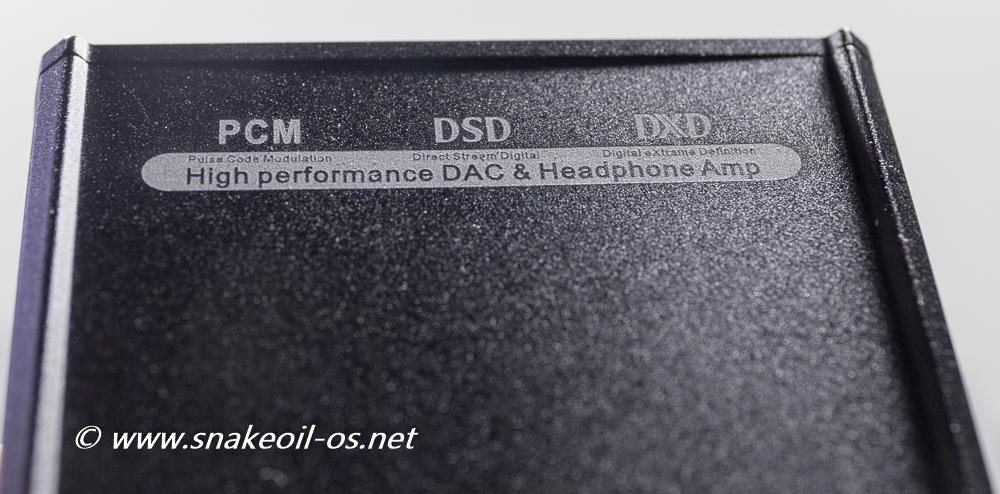
Turn the device on, and I'm confronted with a weird "no single" text.
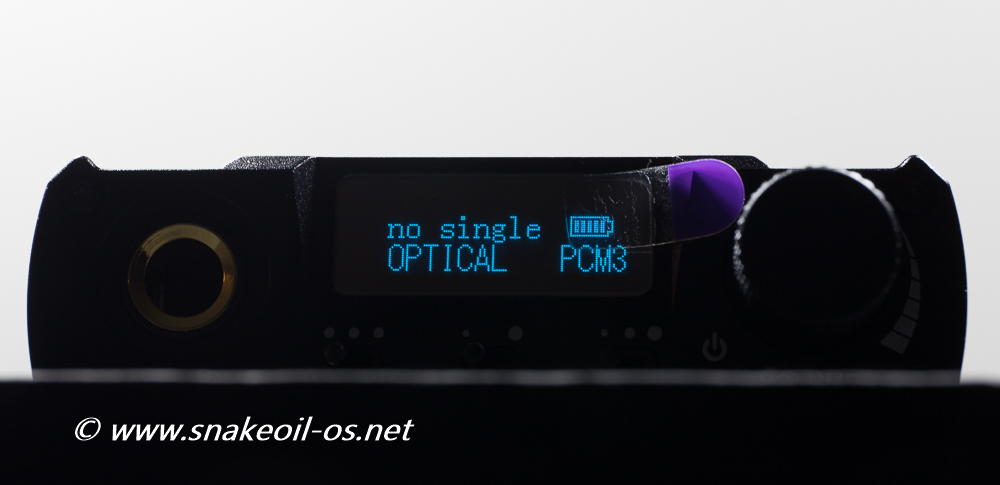
Why yes, I know I'm happily married, thank you. Not sure how "No Signal" becomes "No Single", but I find this typo hilarious.
Remember back in the days the Japanese are struggling with their command of English. That was then, and here is now. History is repeating itself. How times have changed, and how nations have progress (and fallen).
Unfortunately, a quick check on the product website and it does not appear this unit is firmware upgradeable. Meaning I will be stuck with "no single" for as long as I'm using this DAC. Not a deal breaker for me at all.
Installation (Windows 10 Drivers)
This unit is going to be used for work, so did not try and connect this to a SnakeoilOS machine (May do this in the future if the need arises to troubleshoot any DSD issues). This is my first personal XMOS device, and so I fall back to the included Driver CD. That probably was a mistake as I get this cryptic error:
NSIS: Error launching installer.
And working as a Windows developer, NSIS is something I have used extensively in the past. This is the first time I'm seeing this error. A quick google tells me I need to either:
- rename the installer, or
- move the installer to another folder.
I chose option #2, and sure enough, the installer now starts:
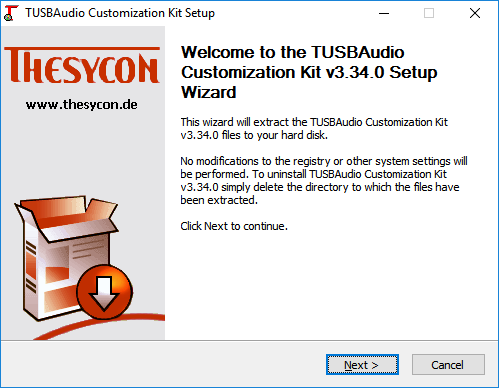
I suspect the NSIS installer do not work if it's executed from a folder containing UTF8 characters. Seriously why can't Microsoft get this right?! Or is this a problem with nullsoft (The maker of NSIS)?
With the software installed, I plugged in the DAC, powered it on, my computer makes the "USB detected" notification sound- and nothing happened.
Checked the device manager, and I don't see any new USB device. After spending some time hunting around, found this folder, and turns out I need to run a second installer (in the DriverPackages folder) to install the XMOS USB driver.

Now that's better! Something popped up in Device Manager now, and I get this new thingy in the system tray.
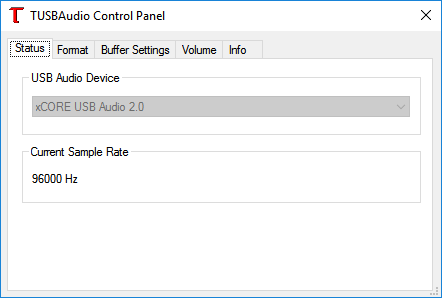
Installation (FB2k)
Been a while since I last used Foobar. So I downloaded the latest modules from source forge:
Install foobar if you havn't done so already.
ASIOProxy
Installing ASIOProxy is straight forward, download the file (See URL #1 above), unzip it to get the executable installer. Double click the installer to launch.
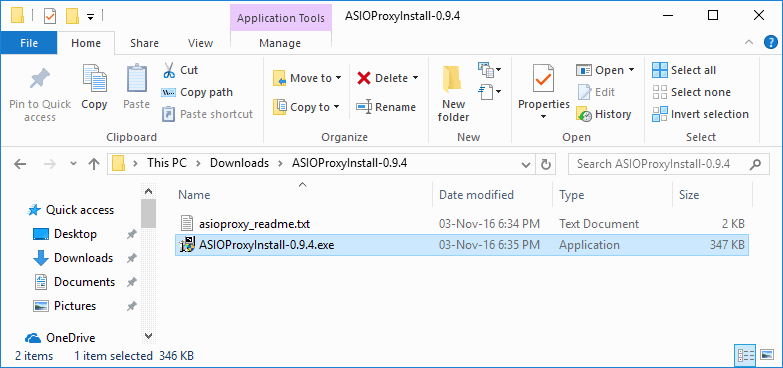
Once the installer launched, this is the screen you should see. Nothing to do here so just click the Next button (lower right).
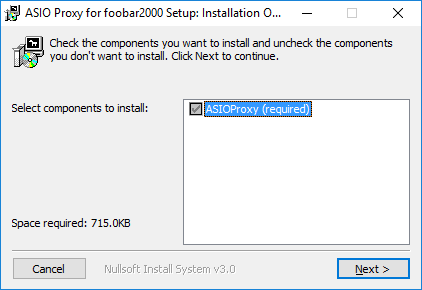
Again I don't recommend you change any settings. Just click the Install button to begin installation.
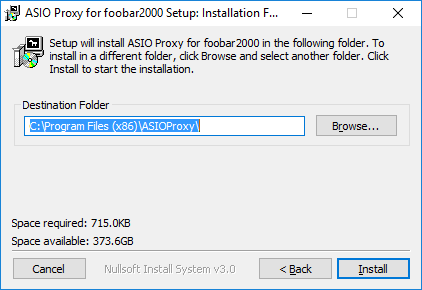
Wait for install to finish. You can click the Show Details if you are curious. The whole installation will only take a few seconds at most. Click the Close button to finish.
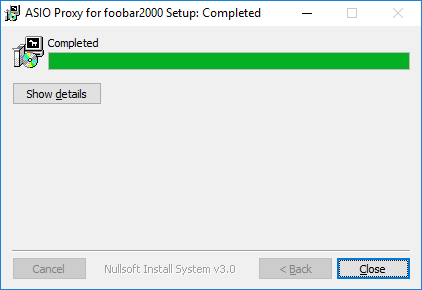
And you're done installing ASIOProxy!
foo_input_sacd
Download the latest version (see URL #2 above). Extract the file.
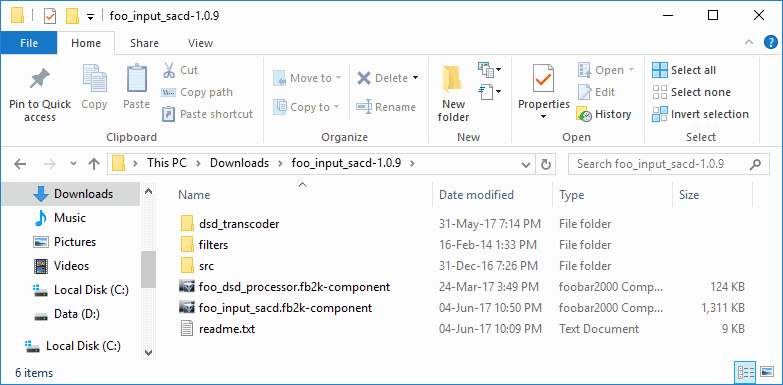
Double click the two files that ends with -component. Foobar2k should start automatically and prompt you with a Component Installer Dialog. Make sure you click the Yes button.
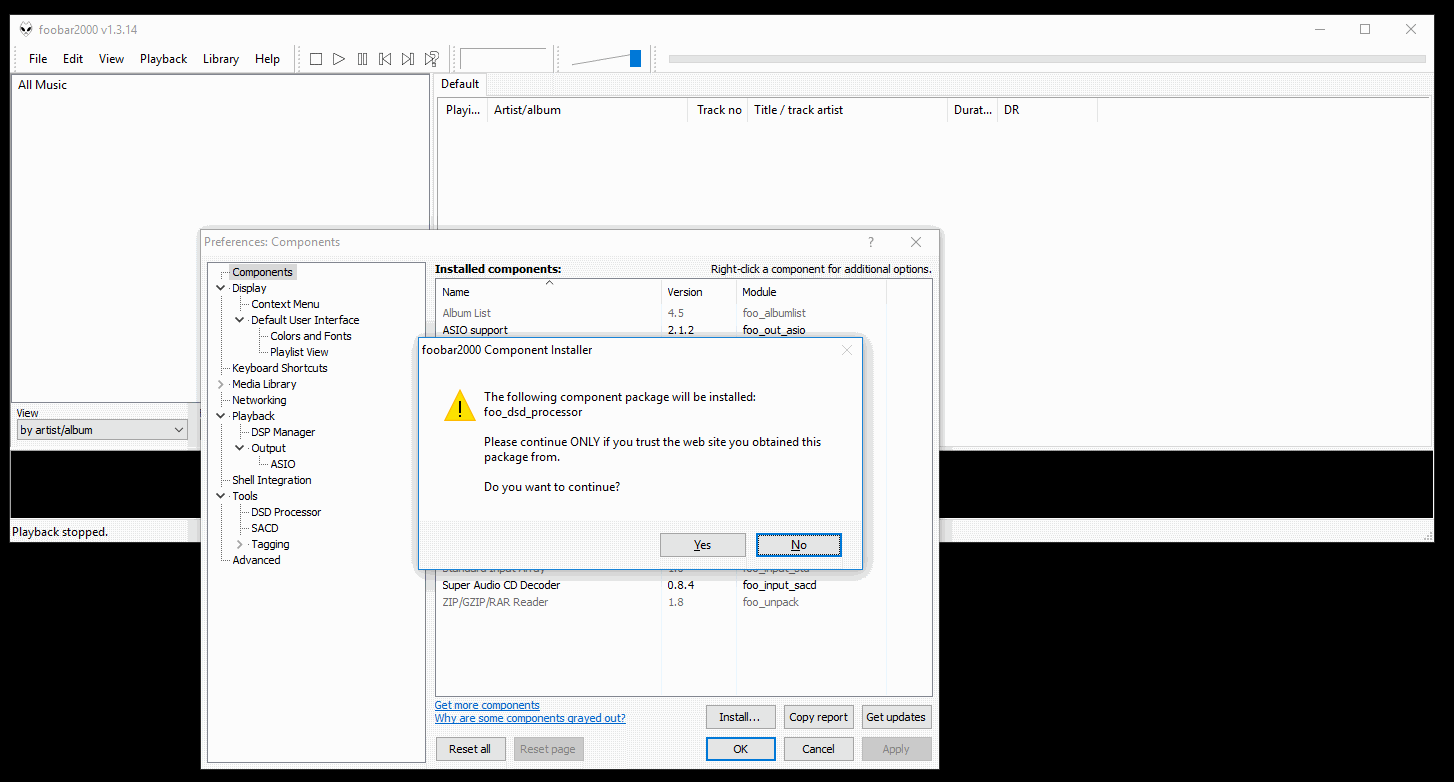
Make sure you install the two components, and restart FB2k when prompted.
FB2K Configuration
Now that you have all the necessary software installed. You'd need to configure this DAC. Start FB2k, and press CTRL+P. Under Playback -> Output. Click on the Device drop down box and select ASIO: foo_dsd_asio. Like so:
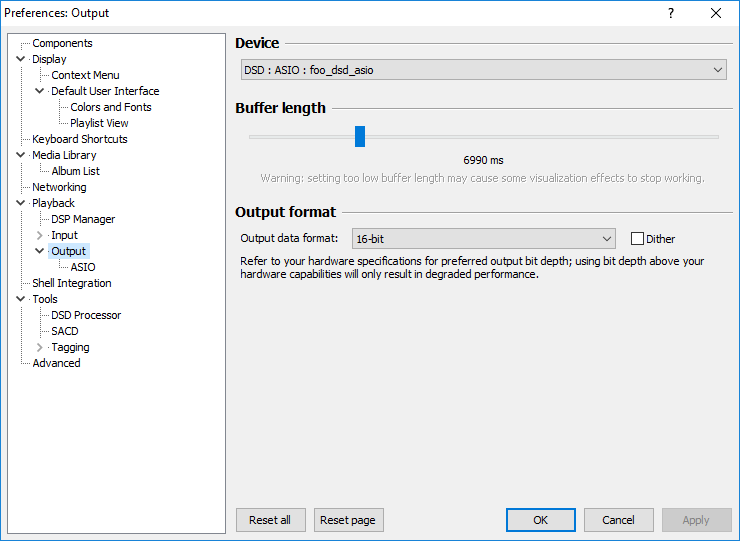
Next, Under Playback -> Output -> ASIO. Double click foo_dsd_iso as shown here:
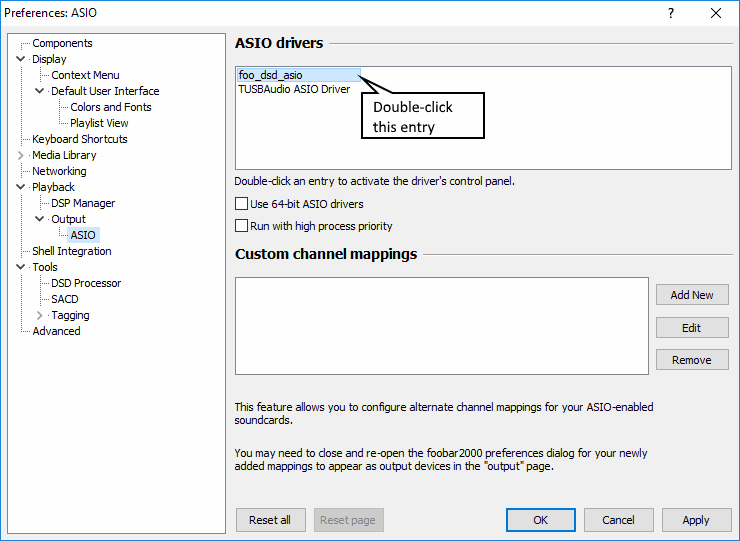
Select TUSBAudio ASIO Driver as your ASIO Device.
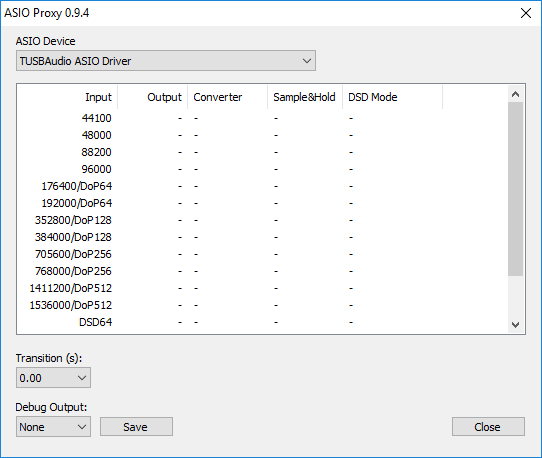
If you decide to convert PCM audio into DSD, use your mouse and click on the - (Do this for all the columns). You have to click 'em one by one to set it all up. This is an example where I convert redbook (44.1 kHz) to DSD128:
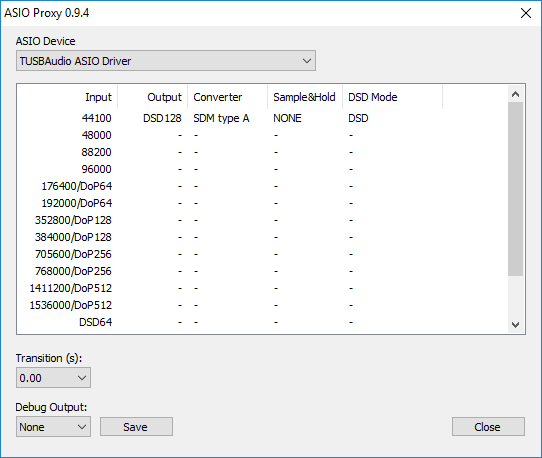
Now you are happy with your settings, click CLOSE to save. Now go to Tools -> SACD and verify the Output Mode is set to DSD, like so:
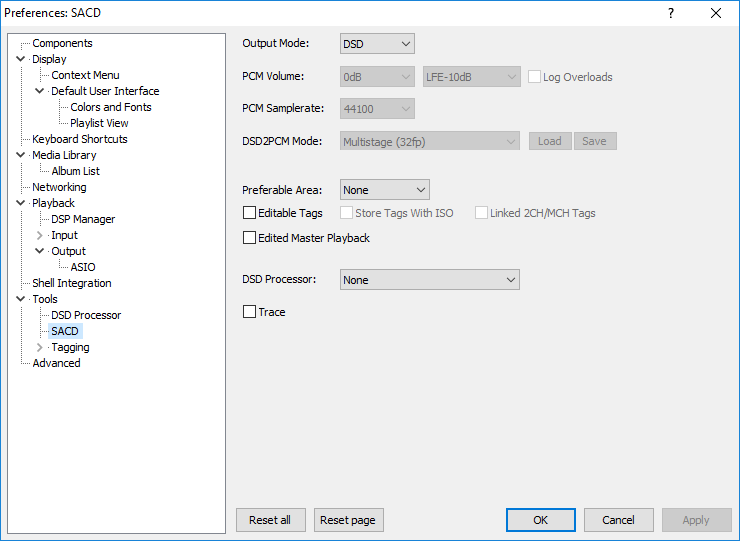
Click OK to save. The final step is to ensure you're xDuoo DAC's software mixer is at 100% (DSD will sound funky if it's not). From your system tray, locate the TUSB icon, launch the configuration. Go to the Volume tab, and make sure both input and output gain is set to 0 dB. Like so:
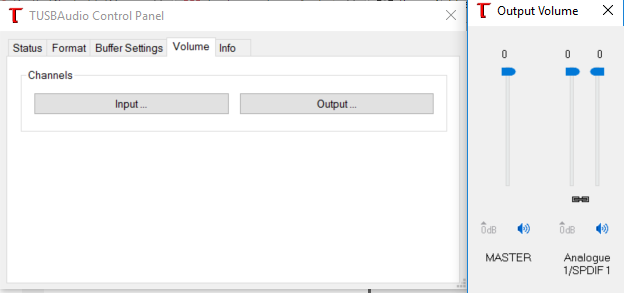
Putting It All Together
Now if everything works as expected. When you play DSD files, it'd show up as DSD on the status panel. And when you play redbook files, it'd show up as 44.1 kHz.
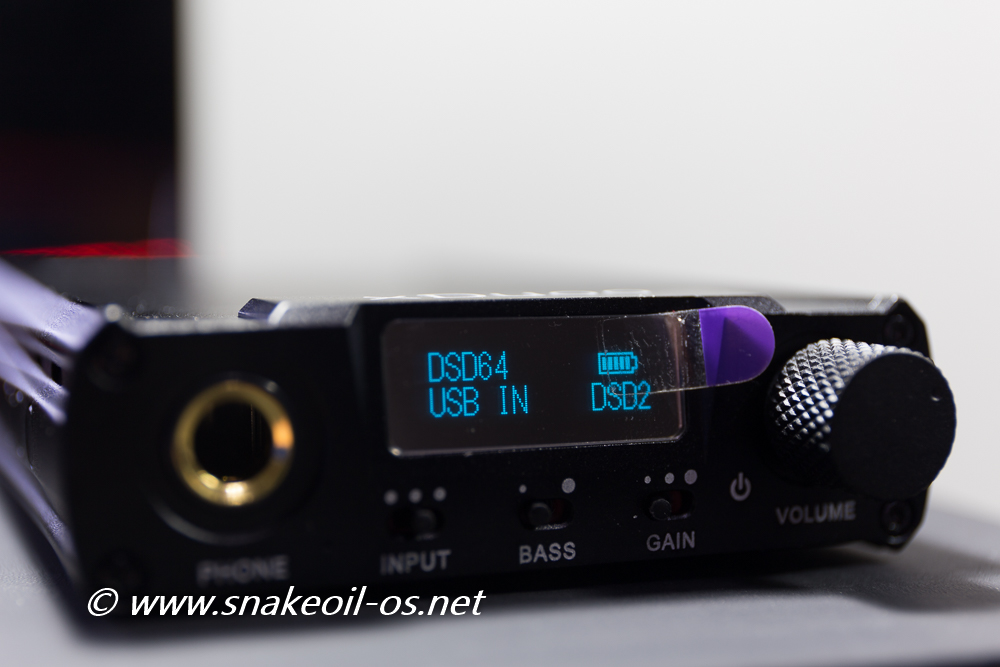
If you prefer, you can choose to convert all PCM to DSD (as described above). The ASIO matrix above allows you to individually choose what to convert to DSD. Although I do think PCM -> DSD conversion somehow appear to improve the clarity department, I find the life from vocals to have an "artificial" tone to it. For work I have left everything as '-'. But at the end of the day, to each his/her own what you choose.
Foobar seems to work well with xDuoo and XMOS cards in general. This wasn't the case in general 2 years ago. Don't think I will start the SnakeoilOS project if I have found something I want back in the day.
Listening Impressions
I am not a Headfi person, and do not listen critically with my Windows computer. The headphones I use is just a compact Sennheiser Momentum. There is also a lot of activity and background noise happening. All this means critical listening impossible. But if I still find Teac UD-501 lacking in this environment, how would the XD-05 fare?
In general - much better than I expected. While the imaging from a Teac UD-501 sounds congested, the XD-05's presentation is a lot more open. I can listen to the "space" within the recordings, and there is a lot more depth now.
For the audiophiles, the bass balance is good, the mid-range is neutral and not overly emphasised, the top end is not distracting and the balance overall is OK. There is no mistake you're listening to digital music, but that's to be expected for a product at the $200 price point. This XD-05 kills the Teac UD-501, which is around 4 times more expensive.
I usually charge the DAC overnight so not really sure how long it'd take to charge up the unit. Fully charged the DAC can last the entire work day of 9 hours. A word of caution though - do not run out the battery. When the battery isi depleted the DAC will be in a constant on/off cycle, and it'd send a POP to your headphones. This is a bug and could possibly be fixed in the firmware - but this unit cannot be upgraded. So develop a habit to always shut down the DAC when you are not using it. This is not a device that you want to leave powered on, unattended with your headphones plugged in.
Audio Grading
Because I'm not listening to this unit critically, there's not going to be any sample music examples for points of reference. This is more a subjective assessment, listening to music in a pretty noisy open space environment (server equipment fan blazing, people video conferencing or on phones, keyboards clicking, etc) can do that to you.
| Component | Comments | Grade |
|---|---|---|
| Timbre |
Timbre is a bit off. I cannot tell why or what is causing this. At least it's not particularly terrible, or is it horribly bad. So I guess it ranks somewhere in the middle of the pack. You can still identify the type of instruments that's playing, but it's not easy to discern the subtle differences when multiple instruments of the same type are playing. |
6/10 |
| Engagement |
So far don't find myself lost in the music. There are no hair raising moments for me, and no music I have listened to so far made me stop work to listen. Horses for courses, but I doubt I will ever be remotely engaged even if the environmental conditions are better. |
4/10 |
| Imaging | Separation of sounds in a live recording is pretty decent. Not as good as a full speaker setup, but if you are familiar at how it sounds in a speaker system, the same music playing off the headphones is just a bit lacking. Having said that, there are some music that seems to be mixed for the headfi setup, and with these music the presentation is pretty good. | 6/10 |
| Female Vocals |
Middle of the pack again here. The female voices are rendered ok, the higher pitched voices don't irritate me as much as the Teac. Having said that, I find it did not resolve the more intricate textures of what make voices great/distinctive (e.g. Ella Fitzgerald). It just cannot bring out that missing x-factor when it comes to x-factor voices. Then again, not a lot of DACs do. So I'm not really complaining. |
6/10 |
| Male Vocals | Like the female voices. It's doing things OK, but lacks that depth that will blow you away. | 6/10 |
| Instruments |
Again not bad, but not exceptional. The decays/harmonics don't sound particularly natural. But it's not really a deal breaker here. Playing around with the filters do change this to an extent so it'd take me more time to experiment. |
5/10 |
| Resolution | Nothing really comes up to mind. There are details I can hear in the recordings. But those details are the ones I l already knew. So far did not hear anything new that blew me away yet. | 5/10 |
| Overall Audio Grade |
The audio quality is not subjected to the DAC itself, other variables like the software player, the DAC driver, the plugins, and the computer itself can influence sonic quality. Some of the negatives could be due to the DAC itself, and it could be due to something else. Only time will tell. All up this is still a decent DAC for the price point and can beat other "branded" gear that's 4-5 times more expensive than this. |
5.5/10 |
This is not just the grade of the xDuoo itself. It's more a overall grade of my work computer, foobar2000, the headphones, the DAC and most importantly myself.
Conclusions
Factor in the physical unit and this unit would be a solid 6 out of 10 for me. Not perfect, but no deal breakers either. At the end of the day, this DAC has all the features I need for work, and it has competent playback audio quality.
Pros
- Feature rich with tons of input/output options
- Decent volume control
- Portable, lightweight and durable
- Battery life can last a whole day
Cons
- Do not like a different cable for charging
- You don't want to let this DAC run out of batteries - keeps 'popping' the headphones
- Very easy to touch the 3 side buttons as I moved the DAC. This is getting annoying but it's more a user problem
Overall, for under AUD $215 - the xDuoo XD-05 is excellent value for money. I'd recommend this to people who don't want to spend extra money on more expensive products - e.g. iFi. Sure you can spend more for something better, and yet you can spend more and get something far worse (I'm looking at you again Teac!). And honestly I feel uncomfortable spending thousands on gear and then leave them at work. Who knows what's going to happen? Even when you trust your colleagues to do the responsible thing (I certainly do), in the office environment there are other pests (rats, cockroaches and other unmentionable vermin abound). And then there's the daily pack/unpack routine. There are places when you should embrace high end snobbery gear, and there're cases when something like the xDuoo XD-05 is the perfect solution.


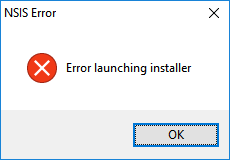

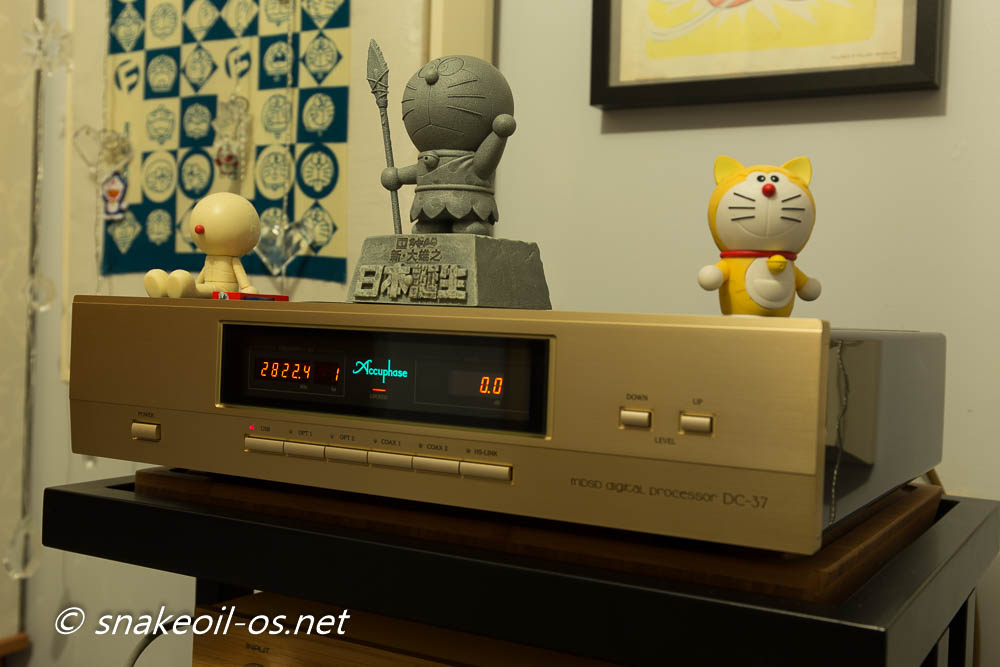
Comments
hey, u still have this thing…
hey, u still have this thing?
i think what happen is that the opamp chip needs change. Consider LME49720 if u dont fancy to do any soldering, or just buy the Burson V5i if u have budget, easier.
I crossed this text when i roll the opamp, and i think my opa1612 is bad, and got this text.
Cheers
Yeah still have it. Using it…
In reply to hey, u still have this thing… by airil (not verified)
Yeah still have it. Using it mainly for work. Am considering a Burson V5i, will eventually buy one (waiting for a sitewide e-bay discount to pull the trigger).
BTW, the drivers from the CD…
BTW, the drivers from the CD no longer works on recent versions of Windows 10. Please go here (https://www.xduoo.net/forums/topic/xduoo-xd-05-plus-driver-4-6-7/) for instructions on how to install the new driver.
*NOTE* : This is xDuoo xd-05 POKE. (Not plus). So when upgrading the firmware, make sure you choose the right bin file.
Add new comment